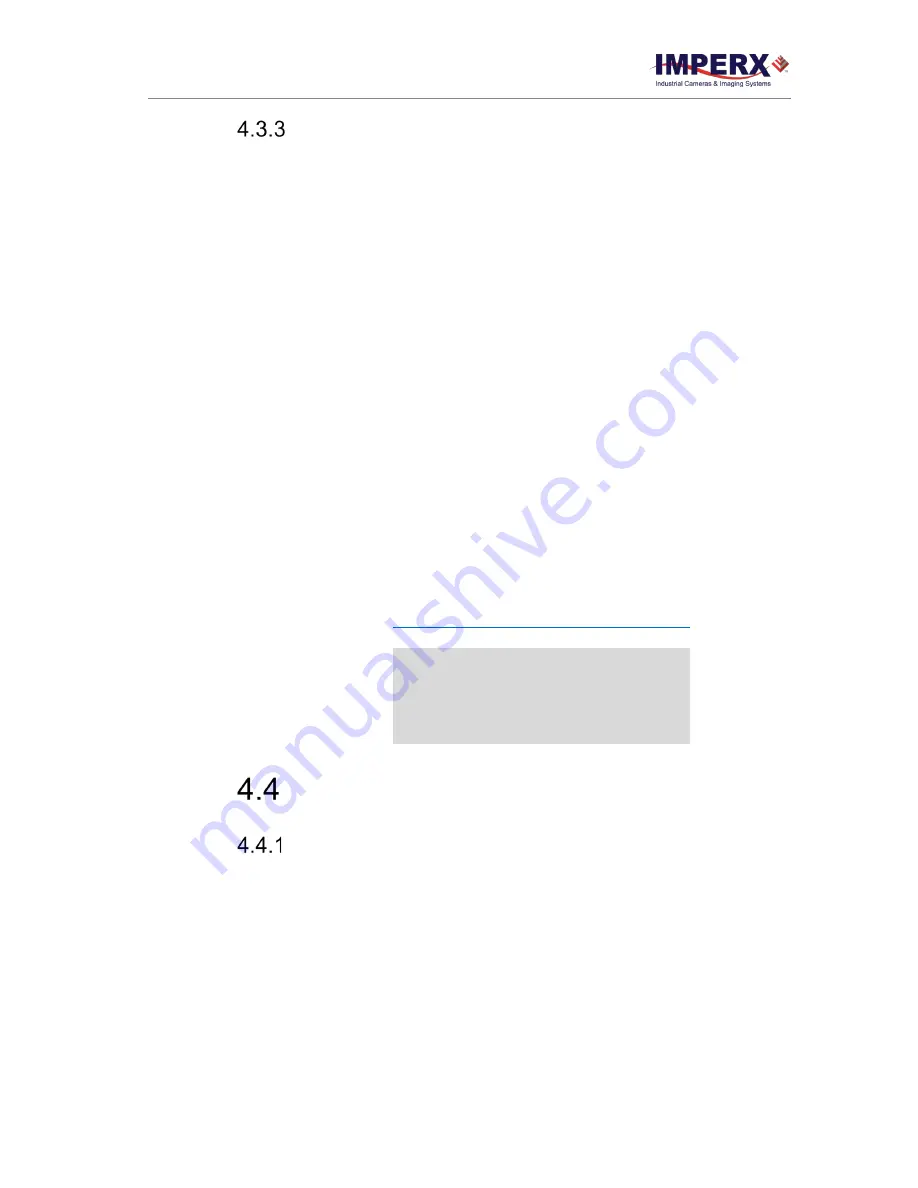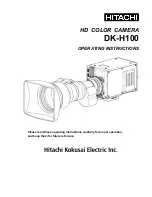
Cheetah Python Cameras User Manual | CoaXPress (CXP) Interface
August 27, 2019
Page
63
of
86
Rev 1.0
Factors Impacting Frame Rate
The camera frame rate depends upon a number of variables including the exposure time,
number of rows and columns in the AOI, the amount of decimation within the image, and
the bandwidth of the output interface.
AOI size
– Camera frame rate increases by decreasing either the number of columns or
number of rows to read out. Decreasing the number of rows to read out causes the largest
increase in frame rate.
Exposure Time
– In free-running mode, the camera overlaps the exposure time and image
readout. In trigger mode, the exposure and readout time do not overlap, and long exposure
times will decrease frame rate.
Decimation
–
The camera supports both subsampling and pixel averaging to reduce the
output resolution. Subsampling and pixel averaging increase the sensor frame rate.
However, subsampling decimation offers the largest frame rate improvement by reducing
the number of rows and columns read out from the image sensor. Subsampling and pixel
averaging decimation provide about a 2x to 3x increase in frame rate.
Output Interface Bandwidth
–
The bandwidth of the output interface can impact the
maximum achievable frame rate.
4.3.3.1
AOI Frame Rate Examples
The following table provides examples of frame rate from various AOI’s using the CXP
output with a Cheetah C5180 camera. The camera will calculate and display actual frame
rates from any horizontal and vertical window you choose to implement. The hardware and
speed of your output interface might impact your results.
Table 35:
Frame Rates for various AOIs
C5180 Resolution
Max. CXP Frame Rates
Full Resolution
44 fps
3840 x 2160
137
1920 x 1080
466
1280 x 720
687
Subsampling
Pixel Averaging
The principal objective of pixel averaging is to reduce the image resolution with better final
image quality than using a subsampling function. Pixel averaging reduces the output
resolution by averaging several pixels together and has the advantage of reducing aliasing
and noise, which increases the signal-to-noise ratio (SNR). Subsampling — as opposed to
averaging — has the advantage of increasing the output frame rate by reducing the number
of rows read out, but also introduces aliasing in the final image. Subsampling, however,
increases the output frame rate more than pixel averaging.
You cannot apply both averaging and subsampling decimation simultaneously. The camera
does not support Zero ROT when averaging is enabled. Color cameras do not support pixel
averaging.
















































